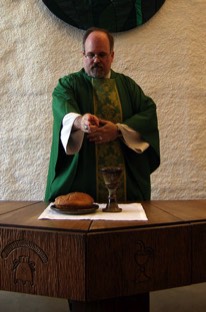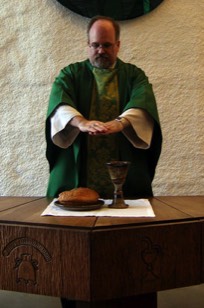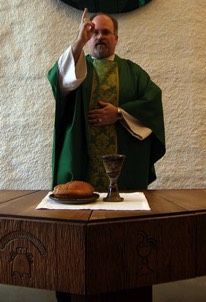Suggestions for Presiding at the Eucharist

For more than 35 years United Methodists have affirmed the importance of the Eucharist by pairing the Word and the Table together in their normative pattern for worship: The Word and Table services as found in the Hymnal and the Book of Worship. Hence, the sacrament demands attention on the part of the presiding minister; it calls for careful preparation and a serious appreciation for its proper administration. This is true for all those who preside at the Table, not just those who minister in the United Methodist tradition. All clergy should take care to ensure that the sacrament is never cavalierly administered and that its meaning and place within the spiritual life of all believers is clearly proclaimed.

"Whoever, therefore, eats the bread or drinks the cup of the Lord in an unworthy manner will be answerable for the body and blood of the Lord. Examine yourselves, and only then eat of the bread and drink of the cup. For all who eat and drink without discerning the body, eat and drink judgment against themselves."
Addressing these issues is the purpose for the suggestions and principles offered here. We'll begin with a list of the "Do's and Don'ts," followed by a few words of commentary. On other pages we'll examine my own celebration style, and we'll also look at alternatives and suggestions for presiding in non-traditional settings.
Keep in mind that these are general suggestions; they should be helpful in the development of any meaningful celebration style. Specifics will come later.
Some Do's
Some Don'ts
- Be intentional in every written or spoken word.
- Be consistent and deliberate in all actions (hand-motions, bows, nods, etc).
- Be open to expanding your style of presiding beyond that to which you are accustomed.
- Be familiar with the words of the liturgy being used.
- Be open to adapting the liturgy to the themes of the liturgical season or of the day.
- Be comfortable with your denomination's theology of the Eucharist.
- Be comfortable with your own theology of the Eucharist.
- Be comfortable with your role as the presiding minister.
- Give consideration to adopting the sign of the cross for use in the liturgy.
- Give consideration to vesting, even if you don't usually wear albs, robes, or stoles in worship.
- Make your celebration authentically your own.
Some Don'ts
- Don't be sloppy with any aspect of the celebration.
- Don't be hasty in speech or action.
- Don't depart from the liturgy being used.
- Don't be overly complex or elaborate.
- Don't ignore the past-experience of your congregation.
- Don't be afraid of innovation within limits.
- Don't be overly emotional when presiding.

For example, if making the sign of the cross feels unnatural to you, your discomfort will be evident to those participating in the service. Conversely, if you are comfortable with crossing yourself, the elements, or the congregation, others will sense the spiritual depth of your practice and may become become more comfortable with it in themselves. The same applies to other gestures, such as kneeling or bowing after the Words of Institution (during the said or sung "Christ has died ..."). If reverencing the elements in this way resonates with you, do so. If it does not, refrain—empty rituals are easily recognized. Whatever gestures and postures you adopt, be intentional and purposeful in celebrating the Eucharist, and your congregation will appreciate it.
Similar considerations may apply to the wearing of vestments. Many churches incorporate "contemporary" or "modern" worship styles, where vestments (robes, albs, and stoles) may feel out of place. While such services are popular and special garb is not required for presiding at the sacrament, the ancient traditions of the Church still hold value. One option is to wear a stole—even in less formal services—while presiding at Communion. The photos in this Communion Lab depict the celebrant wearing an alb, stole, and chasuble, which is my preference. However, many other modes of vesting are acceptable. If you watch the communion videos, you will notice that I often vest simply in an alb and a stole. Regardless of attire, those presiding over Communion should remain true to their spiritual convictions while also considering the comfort of their congregation.
A final word on making the sign of the cross. Many assume this is an exclusively Roman Catholic practice, but it has long been common among Episcopalians and is increasingly seen among United Methodists. If you are considering incorporating the sign of the cross in your Eucharistic celebration but are unsure of its appropriateness in a Methodist service, start by making the sign only over the elements during the prayer of consecration. You might also extend the sign over the congregation immediately afterward, symbolizing their connection to the sacrament. This practice visually reinforces our remembrance of Christ's death, the very act the sacrament embodies. Once comfortable, you may find it meaningful to use the sign of the cross at other posts, such as during prayers of benediction or absolution when invoking the Trinitarian formula: "In the name of the Father, and of the Son, and of the Holy Spirit."
With these principles in mind, we now turn to Tutorial for Celebrating the Holy Eucharist.